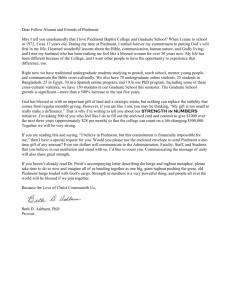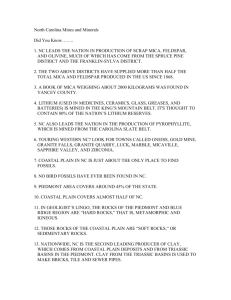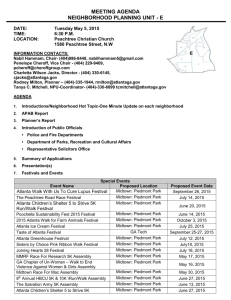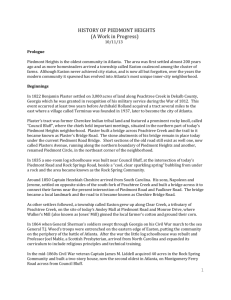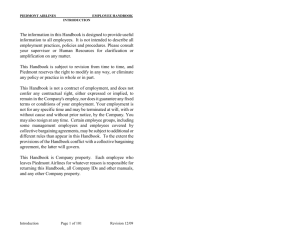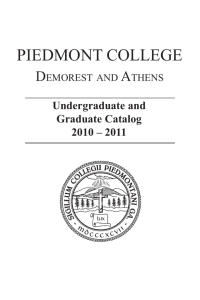Georgia`s second largest region is the Piedmont, a French word for
advertisement
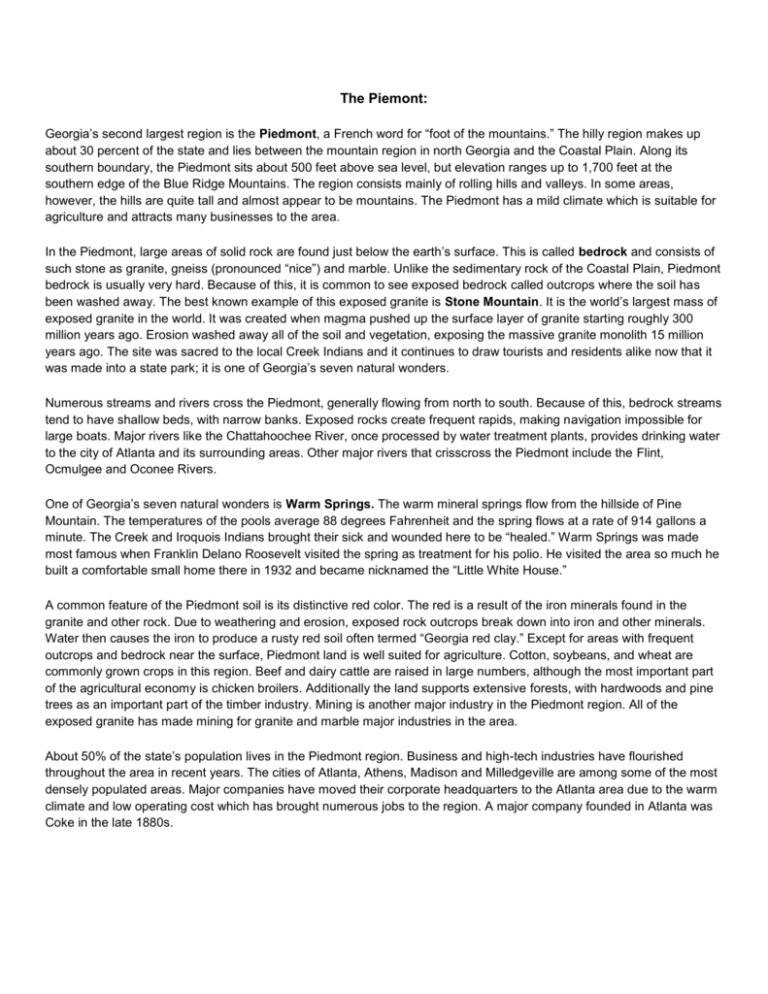
The Piemont: Georgia’s second largest region is the Piedmont, a French word for “foot of the mountains.” The hilly region makes up about 30 percent of the state and lies between the mountain region in north Georgia and the Coastal Plain. Along its southern boundary, the Piedmont sits about 500 feet above sea level, but elevation ranges up to 1,700 feet at the southern edge of the Blue Ridge Mountains. The region consists mainly of rolling hills and valleys. In some areas, however, the hills are quite tall and almost appear to be mountains. The Piedmont has a mild climate which is suitable for agriculture and attracts many businesses to the area. In the Piedmont, large areas of solid rock are found just below the earth’s surface. This is called bedrock and consists of such stone as granite, gneiss (pronounced “nice”) and marble. Unlike the sedimentary rock of the Coastal Plain, Piedmont bedrock is usually very hard. Because of this, it is common to see exposed bedrock called outcrops where the soil has been washed away. The best known example of this exposed granite is Stone Mountain. It is the world’s largest mass of exposed granite in the world. It was created when magma pushed up the surface layer of granite starting roughly 300 million years ago. Erosion washed away all of the soil and vegetation, exposing the massive granite monolith 15 million years ago. The site was sacred to the local Creek Indians and it continues to draw tourists and residents alike now that it was made into a state park; it is one of Georgia’s seven natural wonders. Numerous streams and rivers cross the Piedmont, generally flowing from north to south. Because of this, bedrock streams tend to have shallow beds, with narrow banks. Exposed rocks create frequent rapids, making navigation impossible for large boats. Major rivers like the Chattahoochee River, once processed by water treatment plants, provides drinking water to the city of Atlanta and its surrounding areas. Other major rivers that crisscross the Piedmont include the Flint, Ocmulgee and Oconee Rivers. One of Georgia’s seven natural wonders is Warm Springs. The warm mineral springs flow from the hillside of Pine Mountain. The temperatures of the pools average 88 degrees Fahrenheit and the spring flows at a rate of 914 gallons a minute. The Creek and Iroquois Indians brought their sick and wounded here to be “healed.” Warm Springs was made most famous when Franklin Delano Roosevelt visited the spring as treatment for his polio. He visited the area so much he built a comfortable small home there in 1932 and became nicknamed the “Little White House.” A common feature of the Piedmont soil is its distinctive red color. The red is a result of the iron minerals found in the granite and other rock. Due to weathering and erosion, exposed rock outcrops break down into iron and other minerals. Water then causes the iron to produce a rusty red soil often termed “Georgia red clay.” Except for areas with frequent outcrops and bedrock near the surface, Piedmont land is well suited for agriculture. Cotton, soybeans, and wheat are commonly grown crops in this region. Beef and dairy cattle are raised in large numbers, although the most important part of the agricultural economy is chicken broilers. Additionally the land supports extensive forests, with hardwoods and pine trees as an important part of the timber industry. Mining is another major industry in the Piedmont region. All of the exposed granite has made mining for granite and marble major industries in the area. About 50% of the state’s population lives in the Piedmont region. Business and high-tech industries have flourished throughout the area in recent years. The cities of Atlanta, Athens, Madison and Milledgeville are among some of the most densely populated areas. Major companies have moved their corporate headquarters to the Atlanta area due to the warm climate and low operating cost which has brought numerous jobs to the region. A major company founded in Atlanta was Coke in the late 1880s.

